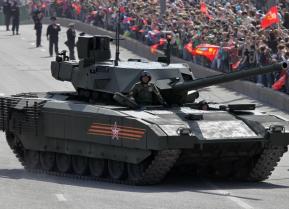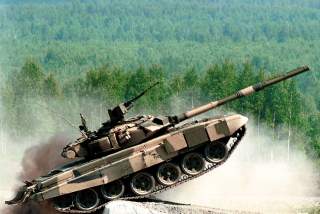Meet Russia's T-80 Tank (One of the Worst Tanks on Planet Earth?)
Let the debate begin.
It was easy for the Russian high command to blame the T-80’s design for the Chechen disaster–as opposed to clumsy operational planning and tactical inadequacies. But ultimately, it was a lack of money which caused the cheaper T-72 to displace the T-80 as the preferred choice for Russia’s export sales and its post-Chechen wars.
When the Soviet Union collapsed, Russia lost the T-80UD production plant in Kharkov to the newly independent Ukraine. The T-80U factory at Omsk declined into bankruptcy, while the Leningrad LKZ plant no longer made the earlier T-80BV.
For Russia to have three tank types–the T-72 (A and B), T-80 (BV, U and UD) and T-90 (a rebrand of the T-72BU)–made no financial or logistical sense. Each tank had the same 125-millimeter 2A46M gun and similarly performing gun-launched missiles. But they all had different engines, fire control systems and chassis.
In simpler terms, these tanks offered commonality in capabilities but diversity in spare parts, rather than common spare parts and diversity of capabilities. Since the T-80U was far more expensive than the T-72B, it was only logical for a cash-strapped Russia to favor the T-72.
But Moscow continued to experiment with its T-80s, adding active protection systems–which use millimeter-wave radar to track incoming missiles before launching explosive countermeasures. The resulting T-80UM-1 Bars was revealed in 1997 but did not enter production, probably again because of budget cuts.
Russia did not use the T-80 during the Second Chechen War of 1999-2000, or the brief 2008 conflict with Georgia–as far as we know. T-80s have so far not joined the war in Ukraine.
The author is a follower of various science fiction and modern warfare topics like small arms, armor, air power and Middle Eastern conflict.
This piece first appeared in War Is Boring here.
Image: Reuters.


